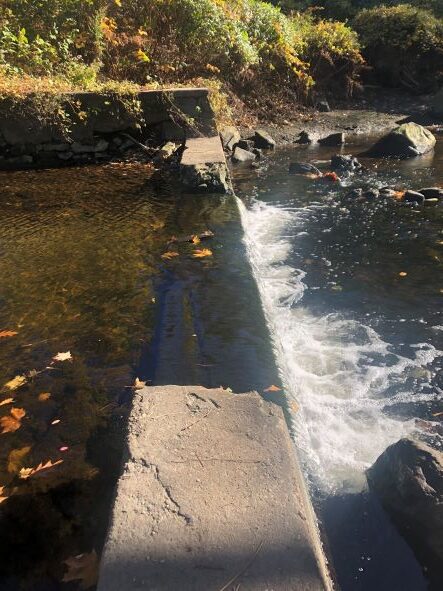May Help Save the Fish
By Howard Husock
It’s easy to miss the dam on Blind Brook between Rye High School and its playing fields. It’s not exactly on a par with Grand Coulee. Other than kayakers heading upstream from Milton Harbor or Rye Nature Center summer campers, led by the intrepid Jana Seitz, few encounter the small cement wall across the brook.
But, as Katie Friedman, ecological program manager for Save the Sound, will tell you, there are fish that do notice it — and don’t much like it. Migrating river herring are blocked from potential spawning grounds; young American eels are blocked from what would otherwise be friendly habitats. Friedman will lead a state-funded Save the Sound project to evaluate the feasibility of removing the dam to “reconnect” a 3.5-mile migratory fish pathway. The project has been made possible by a $109,000 grant from the state Department of Environmental Conservation.
If this seems a high price to potentially protect obscure species, Friedman will quickly disabuse you of that idea. It turns out, she says, that American eel and river herring “play a pivotal role in the food web structure.” That’s because they are the food source for “important recreational and commercial species” — including striped bass, osprey, and even seals. Eels and herring are, in other words, a small but crucial link in the food chain.
Dams, including the Blind Brook dam, block these fish from doing what they need to do to reproduce: migrate from salt water upstream to fresh, in the case of the river herring, and, in the case of the eels, blocking juveniles from heading upstream to mature. Such fish are known as “diadromous”. Some, such as the herring, must head from salt water to fresh to spawn. Others, including the American eels, must head from fresh to salt water to reproduce. Incredibly, the eels do so in only one place on the planet, says Friedman: the Sargasso Sea near Bermuda.
“Eels,” enthuses Friedman, former head of aquatic ecology projects for the New York City Parks Department, “are fascinating.” They begin life in a translucent state, to avoid ocean predators. But, by the time they reach Blind Brook, they are brown, to blend into the stream water.
The dams — and other forms of “habitat degradation”— have reduced eel and herring populations. As a result, the NY State Department of Environmental Conservation has designated them as “species of greatest conservation need”.
The DEC grant will allow Save the Sound to do more than just assess how much it might cost to remove the small dam. It will allow it to take stock of other barriers, farther upstream on Blind Brook. What’s more, Save the Sound will assess, in no small detail, the water quality of Blind Brook, including its dissolved oxygen and nutrient levels.
Save the Sound promises to work with Rye High School students to undertake that monitoring and has already begun to do so through small red-and-white buoy-like data monitors. We already know that the water could be a lot cleaner; the high bacteria count from soil runoff make any fish in the brook unsafe to eat.
Friedman is looking for help from Rye residents who might know about the history of the small dam. To this author’s eye, for what it’s worth, its materials look much like those of the surviving foundation of the one-time Parsons mansion on the Rye Nature Center site.
Before dam demolition can begin, Save the Sound will assess the impact of removal — including on potential Blind Brook flooding. At best, un-damming will increase water flow and reduce that upstream flood risk, although Friedman makes no predictions.
Save the Sound, it’s worth noting, is already in the dam removal business, having removed ten small dams from rivers in Connecticut. A staff engineer, notes Friedman, has overseen the removal of 100 small dams — some left over from long-gone mills — around the world.
Removal of the Blind Brook dam will require engineering design plans to be approved by the state, as well as another round of funding to do the work. If all goes well, however, the eels and herring may be swimming freely sometime in 2025.















